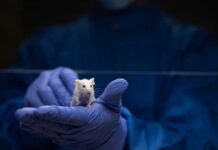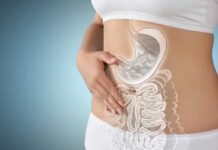
American women over 50 face a silent health crisis due to preventable muscle loss and bone deterioration that could destroy their independence.
Story Overview
- Seven high-protein foods can combat age-related muscle loss and bone density decline in women over 50
- Previous dietary guidelines underestimated protein needs for older adults, leading to widespread health decline
- Plant-based proteins show superior longevity benefits compared to excessive animal protein consumption
- Proper protein distribution throughout the day maximizes absorption and muscle preservation
Government Guidelines Finally Catch Up to Science
After decades of inadequate recommendations, 2025 dietary guidelines finally acknowledge what researchers have known since 2016: women over 50 need significantly more protein than previously advised. The new standards call for 1-1.2 grams per kilogram of body weight, distributed across meals rather than concentrated in single servings. This reversal comes after years of older Americans suffering preventable muscle loss.
Seven Essential Foods That Preserve Independence
Salmon leads the list with high-quality protein and omega-3 fatty acids that support both muscle maintenance and brain health. Greek yogurt and cottage cheese provide calcium alongside protein, directly combating osteoporosis risk. Eggs deliver complete amino acid profiles essential for muscle synthesis. Chicken breast offers lean protein without excess saturated fat, while tuna provides convenient, affordable protein with heart-protective omega-3s. Lentils and beans round out the recommendations as plant-based powerhouses.
Each food serves dual purposes beyond basic nutrition. The calcium in dairy products specifically addresses women’s elevated osteoporosis risk, while omega-3 rich fish combat inflammation that accelerates aging. Plant proteins like lentils provide fiber and compounds that recent studies link to reduced mortality and cognitive decline in older women.
7 High-Protein Foods Women over 50 Should Eat Every Week – EatingWell https://t.co/jcUD2DTFwJ
— Jason Birch (@JasonBirch0916) October 12, 2025
Plant Proteins Outperform Animal Sources for Longevity
Large cohort studies since 2016 reveal plant-based proteins significantly reduce mortality risk compared to animal sources, particularly benefiting women over 50. Lentils, beans, and other legumes provide protective compounds that animal proteins lack, including fiber and antioxidants that support cardiovascular health. However, complete elimination of animal proteins isn’t necessary – moderation and variety deliver optimal results while avoiding potential kidney and heart risks from excessive meat consumption.
Timing Matters More Than Total Intake
Research demonstrates that spreading protein consumption across meals produces superior muscle synthesis compared to consuming large amounts in single sittings. Women over 50 should aim for 20-30 grams of protein per meal rather than backloading their daily intake at dinner. This approach optimizes absorption and provides consistent amino acid availability for muscle repair and maintenance throughout the day.
The shift toward age-appropriate nutrition represents a victory for evidence-based health policy over decades of one-size-fits-all dietary recommendations that failed older Americans. Women who implement these protein strategies can maintain independence, reduce healthcare costs, and preserve the strength needed for active aging – fundamental conservative values of self-reliance and personal responsibility for health outcomes.
Sources:
Best Sources of Protein for Older Adults
High-Protein Foods: The Best Protein Sources for a Healthy Diet
Nutrition Needs: Protein Guidelines
The Importance of Protein Intake for People Over 50
Superfoods for Adult Health
7 High-Protein Foods Women Over 50 Should Eat Every Week
Are You Getting Too Much Protein?
High Protein Foods


















